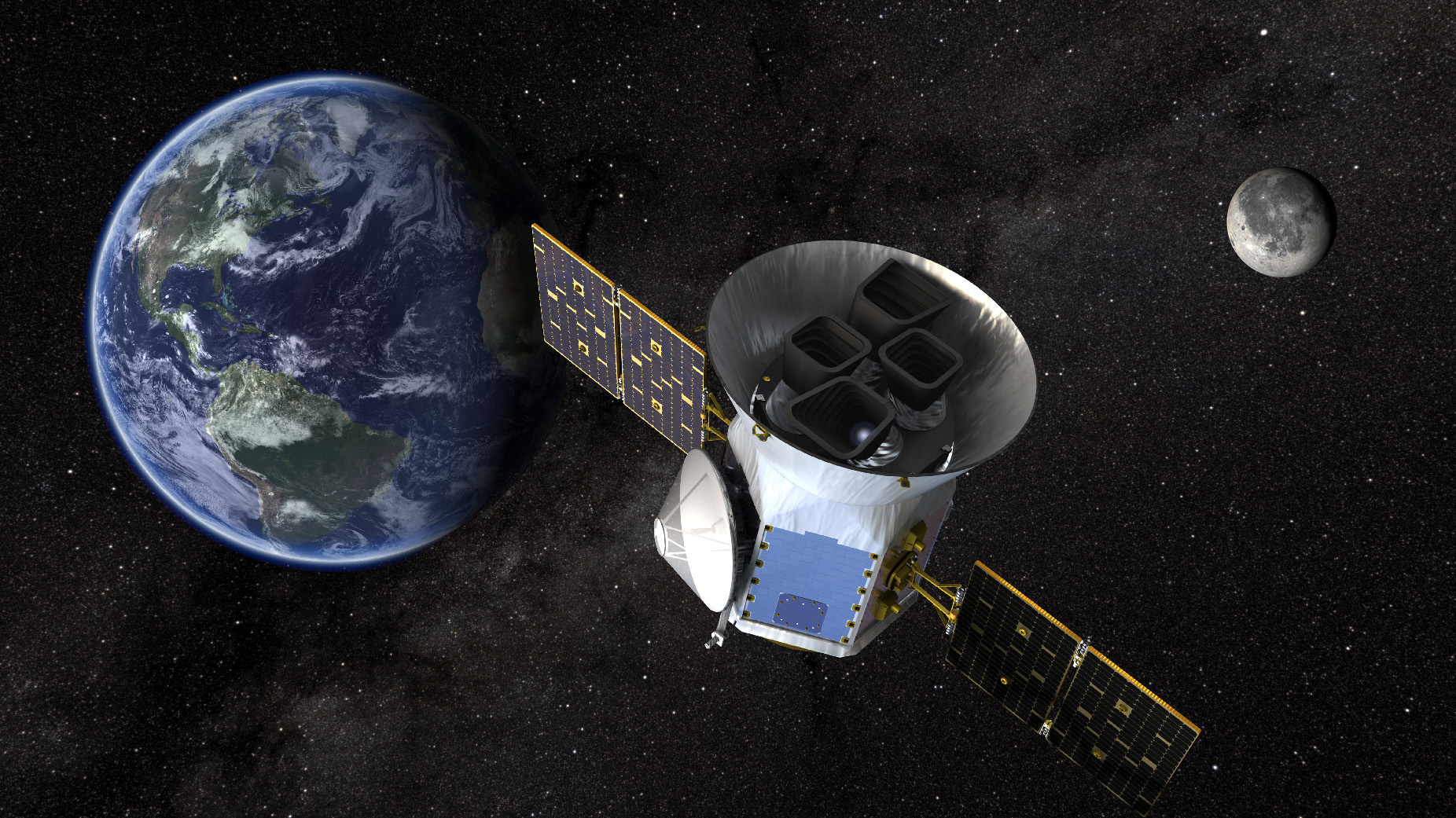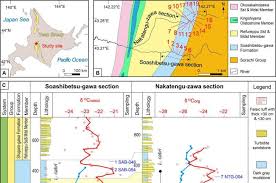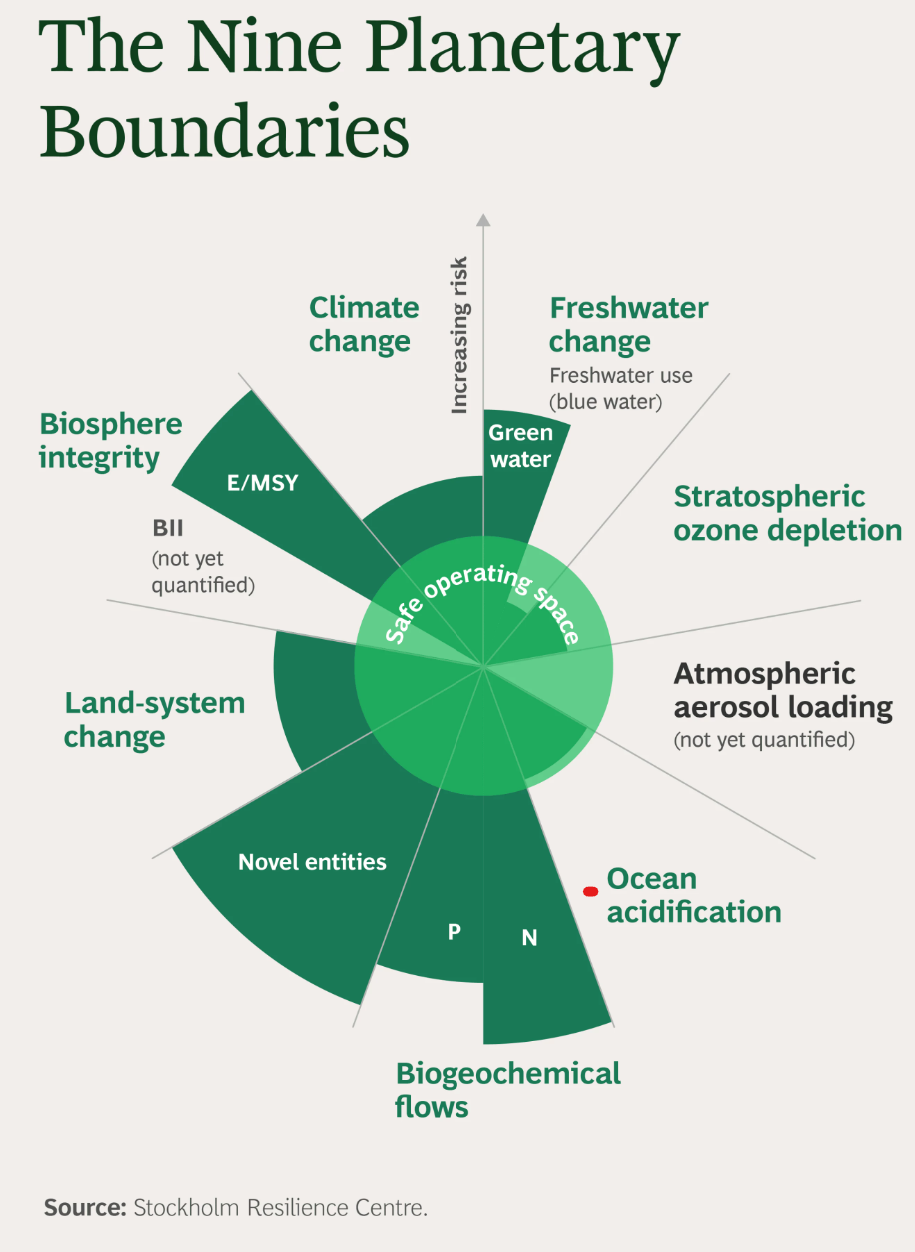Alicella gigantea
- 27 May 2025
In News:
Rare giant shrimp is more widespread than previously believed; new findings reveal.
About the Species:
- Alicella gigantea is a giant deep-sea amphipod crustacean, growing up to 34 cm in length, making it one of the largest known amphipods.
- Amphipods are shrimp-like organisms; over 10,000 species are known globally, inhabiting a wide range of aquatic environments.
Habitat and Depth Range:
- Inhabits the abyssal (3,000–6,000 m) and hadal zones (>6,000 m) of the ocean.
- Notable sightings include:
- A 28 cm specimen observed at 5,304 m in the North Pacific.
- Captures from 6,746 m depth in the Murray Fracture Zone (North Pacific).
Global Distribution:
- Contrary to earlier beliefs, A. gigantea is not rare but is among the most widely distributed deep-sea species.
- Recent analysis compiled 195 records from 75 locations across the Pacific, Atlantic, and Indian Oceans, covering 15 different seafloor features.
- Found in 59% of the world’s oceans.
- The Pacific Ocean is its most significant habitat, with 75% of the seafloor in its suitable depth range.
Genetic Insights:
- Genetic analyses (16S, COI, 28S genes) show low genetic divergence across populations.
- This suggests A. gigantea represents a single, globally distributed species with strong genetic conservation.
- A shared haplotype network across regions indicates minimal genetic differentiation, supporting global connectivity among populations.
Conservation and Research Significance:
- Despite its wide range, A. gigantea remains poorly understood, particularly in terms of population size, ecology, and evolutionary history.
- Only seven studies have sequenced its DNA to date.
- The findings are a significant step toward understanding deep-sea biodiversity, biogeography, and conservation priorities in abyssal ecosystems.
Transiting Exoplanet Survey Satellite (TESS)

- 05 Apr 2025
In News:
- An international team of astronomers, using NASA’s TESS mission, has discovered a new warm Jupiter-type exoplanet located over 1,000 light-years away.
- “Warm Jupiters” are gas giants that orbit their stars at moderate distances, experiencing higher temperatures than Jupiter but cooler than “hot Jupiters”.
About TESS (Transiting Exoplanet Survey Satellite)
- Launched: March 2018 by NASA.
- Objective: To discover thousands of exoplanets (planets outside our solar system) by observing the brightest dwarf stars in the sky.
- Successor to: NASA’s Kepler Space Telescope, which pioneered large-scale exoplanet discovery (2009–2018).
Working Principle:
- TESS uses the transit method:
- It monitors periodic dips in star brightness, caused when a planet crosses (or transits) in front of its host star.
- This reveals the size (diameter) of the exoplanet and helps estimate its orbital characteristics.
- Helps identify habitable zone planets, where liquid water may exist on Earth-like worlds.
Mission Highlights:
- Prime Mission Duration: Two years, completed on July 4, 2020.
- Covered nearly 75% of the sky, divided into 26 sectors.
- Discovered 66 confirmed exoplanets during the prime mission.
- Now operating under an extended mission, continuing to explore distant planetary systems.
- Finds planets of varied sizes and compositions, from rocky Earth-like bodies to gas giants.
Axions and the HAYSTAC Experiment

- 15 May 2025
In News:
A recent study published inPhysical Review Letters reports that while the HAYSTAC experiment did not detect axions, it achieved a major technological milestone. The experiment significantly broadened the search range for axion masses and their interaction strengths, marking substantial progress in the hunt for dark matter.
What are Axions?
Axions are theoretical subatomic particles proposed in the late 1970s as a solution to the strong CP (Charge-Parity) problem in quantum chromodynamics (QCD). This problem involves the puzzling absence of CP violation in strong nuclear interactions, contrary to expectations.
- Axions were introduced to dynamically neutralize CP-violating effects by adjusting the QCD theta (θ) parameter to nearly zero.
- Over time, they have also gained prominence as a leading candidate for dark matter, the elusive form of matter believed to make up the bulk of the universe’s mass.
Why Axions matter in Dark Matter Research
Axions are particularly attractive as Cold Dark Matter (CDM) candidates due to their theoretical and cosmological properties:
- Electromagnetically neutral
- Extremely low mass
- Very weak interactions with ordinary matter and radiation
Foundational work by physicists like Sikivie, Wilczek, Dine, and Preskill demonstrated that axions produced in the early universe could account for the observed dark matter density—roughly 85% of the universe's matter content.
The HAYSTAC Experiment: A Precision Tool for Axion Detection
HAYSTAC (Haloscope At Yale Sensitive To Axion Cold Dark Matter) is a collaborative project led by Yale, Berkeley, and Johns Hopkins University, designed to detect axions by converting them into detectable photons using a haloscope.
Key Features:
- Haloscope Design: A microwave cavity placed in a strong magnetic field, following a design originally proposed by Pierre Sikivie.
- Quantum Squeezing: HAYSTAC is one of the few experiments—alongside Advanced LIGO—that uses quantum squeezing to reduce quantum noise, thereby enhancing measurement precision.
What is Quantum Squeezing?
Quantum squeezing is a technique that manipulates quantum uncertainty to minimize noise in one variable while tolerating increased uncertainty in another. This helps:
- Suppress random fluctuations, and
- Improve the signal-to-noise ratio—vital for detecting rare, weak signals like those possibly produced by axions.
Phase II Highlights of HAYSTAC
- Conducted the widest frequency sweep to date in the axion mass range.
- Marked a technical breakthrough in detection sensitivity.
- Although axions were not detected, the results helped rule out certain mass-coupling combinations, narrowing the parameter space for future searches.
ALICE Experiment
- 13 May 2025
In News:
The ALICE collaboration at CERN’s Large Hadron Collider (LHC) has experimentally observed the conversion of lead nuclei into gold nuclei through a rare nuclear transmutation process. This discovery, reported in Physical Review C, marks the first systematic detection of gold production via electromagnetic dissociation at the LHC.
Historical Context: The Dream of Chrysopoeia
The idea of turning lead, a common base metal, into gold—a precious metal—dates back to medieval alchemy and is known as chrysopoeia. Alchemists were motivated by the similarity in density between lead and gold, but modern chemistry has established that chemical reactions cannot change one element into another since elements differ by their number of protons.
With the advent of nuclear physics in the 20th century, scientists learned that nuclear reactions could transmute elements, either naturally (radioactive decay) or artificially (particle accelerators). However, the ALICE experiment at CERN has revealed a novel mechanism of such transmutation involving near-miss collisions of lead nuclei.
Mechanism of Transmutation at the LHC
The LHC, located on the Franco-Swiss border near Geneva, is the world’s largest and most powerful particle accelerator. It accelerates two beams of lead nuclei (each containing 82 protons) to velocities close to the speed of light (about 99.999993% of the speed of light) inside a 27-kilometre ring.
During ultra-peripheral or near-miss collisions, lead nuclei pass close by each other without direct contact. The intense electromagnetic fields generated by the 82 protons in each lead nucleus compress into a short-lived pulse of photons, producing a process called electromagnetic dissociation.
This photon-induced excitation causes the nucleus to oscillate internally and emit a small number of protons and neutrons. When a lead nucleus (Pb-208) ejects three protons and two neutrons, it effectively becomes a gold nucleus (Au-203).
Role of ALICE Detector and Zero Degree Calorimeters (ZDCs)
The ALICE detector uses Zero Degree Calorimeters (ZDCs) to detect and count these nuclear dissociation events by measuring the number of emitted protons and neutrons. The emission of zero, one, two, or three protons corresponds to the creation of lead, thallium, mercury, and gold nuclei, respectively.
This capability allows ALICE to distinguish rare electromagnetic transmutations from the usual high-energy head-on collisions producing thousands of particles.
Key Findings and Quantitative Data
- The LHC produces gold nuclei at a rate of about 89,000 nuclei per second during lead–lead collisions.
- During LHC Run 2 (2015–2018), approximately 86 billion gold nuclei were generated.
- This corresponds to a mass of only 29 picograms (2.9 × 10?¹¹ grams), far too little for any practical use like jewelry.
- Run 3, with increased luminosity, has nearly doubled the amount of gold produced.
- The gold nuclei exist only for a fraction of a second before fragmenting into protons, neutrons, and other particles upon hitting the LHC’s beam pipe or collimators.
Significance
This discovery:
- Demonstrates a new pathway for nuclear transmutation via electromagnetic interactions at ultra-relativistic speeds.
- Provides experimental data that helps refine theoretical models of electromagnetic dissociation.
- Aids in understanding and predicting beam losses, which are critical for improving the performance of the LHC and future particle colliders.
About CERN and the LHC
- CERN (European Organisation for Nuclear Research), established in 1954, is Europe’s premier high-energy physics research organization with 23 member states and 10 associate members (including India).
- The LHC accelerates particles to nearly light speed in a 27-km circular tunnel under the Franco-Swiss border, facilitating collisions studied by four major experiments: ALICE, ATLAS, CMS, and LHCb.
- These experiments aim to probe fundamental particles and forces, test the Standard Model of particle physics, and explore conditions of the early universe.
Discovery of Chirality in KV?Sb?
- 12 May 2025
In News:
In a major advancement in condensed matter physics, researchers have identified a chiral quantum state in KV?Sb?, a topological material with a Kagome lattice structure. This discovery is significant as the material was earlier thought to be non-chiral, making this the first observation of intrinsic chirality in a bulk topological quantum system.
What is Chirality?
- Chirality refers to the geometric property of an object not being superimposable on its mirror image—a concept known as "handedness".
- It is common in nature, observed in:
- Amino acids
- The double helical structure of DNA
- Spiral patterns in biological systems
- Molecules often exist in left-handed (L) and right-handed (D) forms, a feature crucial to both biochemistry and quantum physics.
About KV?Sb? and the Kagome Lattice
- KV?Sb? is a bulk quantum material characterized by a Kagome lattice—a structure formed by corner-sharing triangles.
- The Kagome pattern, originating from Japanese basket-weaving, serves as a fertile platform for investigating topological and quantum phenomena like superconductivity, charge ordering, and now, chirality.
Scientific Technique Used
- Researchers employed a novel tool called the Scanning Photocurrent Microscope (SPCM).
- Unlike Scanning Tunnelling Microscopy (STM), which offers atomic-resolution images, SPCM is designed to detect nonlinear electromagnetic responses in materials.
- The SPCM detected handedness in the photocurrent, confirming the circular photogalvanic effect (CPGE)—a definitive marker of chirality.
Key Findings
- The material exhibited spontaneous symmetry breaking, particularly the formation of a charge density wave (CDW).
- At 4 Kelvin, KV?Sb? responded differently to right- and left-handed circularly polarized light, demonstrating the breaking of mirror and inversion symmetries.
- This confirms the presence of intrinsic chiral charge order, marking the first such observation in a bulk topological material.
Neanderthal Spear Tip Discovery
- 06 May 2025
In News:
Ancient bone spear tip found in Russia is oldest in Europe and made by Neanderthals.
What Was Discovered?
- Oldest known spear tip in Europe, crafted by Neanderthals, not Homo sapiens.
- Found in a cave in the North Caucasus region, Russia.
- Dated to 70,000–80,000 years ago, prior to modern human arrival in Europe (~45,000 years ago).
- Study published in the Journal of Archaeological Science.
Artefact Features
- Length: ~9 cm
- Material: Bone (likely from bison)
- Construction:
- Shaped using stone tools
- Attached to a wooden shaft with natural tar (early adhesive use)
- Function:
- Micro-cracks indicate impact with a hard target – used in hunting or combat
- Minimal wear, suggesting it was used shortly after construction
Excavation Details
- Excavated in 2003, thoroughly analyzed recently.
- Found with animal bones and campfire remains – evidence of Neanderthal habitation.
- Analytical techniques used: Spectroscopy, CT scans, Microscopy
Shear-Wave Splitting
- 06 May 2025
In News:
Scientists from the University of Oxford have proposed a new method to monitor volcanic eruptions by using the seismic phenomenon of shear-wave splitting, demonstrated at Mount Ontake in Japan.
What is Shear-Wave Splitting?
- Shear-wave splitting is a seismic phenomenon where shear (S) waves split into two components that travel at different speeds based on their polarisation.
- Occurs when waves pass through aligned cracks or fractures in subsurface rocks.
- Movement of magma and volcanic fluids changes stress conditions, causing rock cracks to open or close.
- These changes influence the speed and direction of shear waves.
- Increased shear-wave splitting can indicate rising internal pressure, serving as a potential early warning for volcanic eruptions.
Mount Ontake – Key Facts
- Type: Active stratovolcano
- Location: Honsh? Island, Central Japan, near Tokyo
- Status: Japan’s second-highest volcano
- Part of the Pacific Ring of Fire
- Major Eruption:
- Year: 2014
- Type: Phreatic eruption (steam-driven)
- Casualties: 60+ people, mainly hikers
- Notably occurred without significant seismic warning
- Phreatic Eruptions:
- Caused by steam pressure from heated underground water
- Do not involve new magma
- Difficult to predict using conventional methods
Pulsar G359 and Galactic ‘Bone’
- 06 May 2025
In News:
Astronomers have discovered a likely explanation for a fracture in a huge cosmic "bone" in the Milky Way galaxy, using NASA's Chandra X-ray Observatory and radio telescopes.
About G359.13-0.20005 ("The Snake")
- G359.13 is a non-thermal filament in the Milky Way, resembling a "galactic bone."
- It stretches about 230 light-years and is located ~26,000 light-years from Earth, near the Galactic Center.
- These filaments are visible primarily in radio waves and aligned with galactic magnetic field lines.
- Emissions result from charged particles spiraling along magnetic fields, producing synchrotron radiation.
Key Discovery
- A fracture has been observed in the continuous structure of G359.13.
- This fracture aligns with the location of a pulsar, identified using:
- Chandra X-ray Observatory (X-ray data)
- MeerKAT and VLA (radio data)
About the Pulsar
- A highly magnetized, fast-moving neutron star formed by a supernova explosion.
- Estimated speed: 1–2 million miles per hour.
- The pulsar likely collided with G359.13, causing:
- Distortion in the magnetic field
- Fracture in the radio filament
- Chandra data revealed blue-colored X-ray emissions from the pulsar.
- Nearby X-ray sources may be from electrons and positrons accelerated to high energies.
Scientific Significance
- Provides insights into:
- High-energy astrophysical processes
- Pulsar interactions with galactic magnetic structures
Chandra X-ray Observatory – Key Facts
- Launched: July 23, 1999, aboard Space Shuttle Columbia (STS-93)
- Function: Detects X-ray emissions from hot cosmic objects (e.g., black holes, supernova remnants)
- Orbit: High Earth orbit (~139,000 km altitude) to avoid atmospheric X-ray absorption
- Part of NASA’s “Great Observatories” (with Hubble, Spitzer, Compton)
- Capabilities:
- 8x better resolution than previous X-ray missions
- Detects X-ray sources 20 times fainter than predecessors
- Managed by: NASA’s Marshall Space Flight Center
Ocean Anoxic Event 1a (OAE 1a)

- 26 Dec 2024
In News:
A recent study published in Science Advances has offered fresh insights into the timing and duration of the Ocean Anoxic Event 1a (OAE 1a).
What is OAE 1a?
- Definition: A period during the Cretaceous Period (~119.5 million years ago) when Earth's oceans became oxygen-depleted (anoxic), causing significant disruption in marine ecosystems.
- Cause: Triggered by massive volcanic eruptions that released large amounts of CO?, leading to global warming and depletion of oxygen in oceans. This caused the formation of anoxic marine basins.
- Impact: The depletion of oxygen led to the extinction of marine species, especially plankton, and the formation of black shales (organic carbon-rich layers).
Anoxic Marine Basins:
- Characteristics: These are bodies of water with extremely low or absent oxygen, allowing certain microbes and fungi to thrive, while most aerobic organisms perish.
- Significance: Anoxic basins contribute to carbon sequestration by slowing down the decay of organic material, helping in the reduction of atmospheric CO? levels. Examples include the Black Sea, Cariaco Basin, and Orca Basin.
Recent Study Findings (Published in Science Advances):
- Timing: OAE 1a began approximately 119.5 million years ago and lasted for about 1.1 million years, with a long recovery period for ocean ecosystems.
- Methodology: The study used isotopic analysis of volcanic tuffs from Japan's Hokkaido Island to pinpoint the timing of the event.
- Volcanic Eruptions: The study confirmed that volcanic eruptions, particularly from the Ontong Java Nui complex, released CO?, triggering oceanic oxygen depletion.
- Relevance to Modern Climate Change: The study draws parallels between past volcanic CO? emissions and current human-induced warming, warning that rapid modern warming could cause similar disruptions in marine ecosystems and potentially lead to a Holocene extinction.
Holocene Extinction:
- Definition: The ongoing Sixth Mass Extinction, primarily driven by human activities like overexploitation, habitat loss, pollution, climate change, and invasive species.
- Impact: Current extinction rates are 1,000-10,000 times higher than natural rates, with severe consequences for biodiversity and ecosystem services.
Key Mass Extinction Events:
- Permian Extinction (~250 million years ago): Linked to volcanic activity, global warming, and ocean anoxia, leading to the extinction of over 95% of species.
- Cretaceous Extinction (66 million years ago): Caused by an asteroid impact, exacerbated by volcanic eruptions, leading to the extinction of non-avian dinosaurs.
- Holocene Extinction: Caused by human activities, with long-term implications for biodiversity and ecosystem services.
Efforts to Mitigate Extinction:
- Climate Action: Limiting global warming to 1.5°C as per the Paris Agreement.
- Biodiversity Conservation: The 30X30 Initiative, aiming to conserve 30% of lands and oceans globally by 2030.
- Sustainable Practices: Encouraging sustainable resource management to reduce habitat destruction, pollution, and overexploitation.
PLANETARY BOUNDARIES AND OCEAN ACIDIFICATION

- 27 Sep 2024
In News:
A new report from the Potsdam Institute for Climate Impact Research (PIK) indicates that the world's oceans are nearing critical acidity levels.
- Key Findings:
- Nine Crucial Factors: The report identifies nine essential elements for sustaining life on Earth.
- Exceeded Limits: Six of these factors have already surpassed safe limits due to human activities.
- Ocean Acidification: This is poised to become the seventh boundary breached.
- Crossed Boundaries:
- Factors Affected:
- Climate change
- Loss of natural species and habitats
- Depletion of freshwater resources
- Increase in pollutants, including plastics and agricultural chemicals
- Factors Affected:
- Causes of Ocean Acidification:
- Primarily driven by rising carbon dioxide (CO2) emissions from burning fossil fuels (oil, coal, gas).
- Implications of Acidification:
- Damage to corals, shellfish, and phytoplankton, disrupting marine ecosystems.
- Threats to food supplies for billions of people.
- Reduced capacity of oceans to absorb CO2, exacerbating global warming.
- Ozone Layer Status:
- Currently not close to being breached; showing recovery since the banning of harmful chemicals in 1987.
- Air Quality Concerns:
- A ninth boundary related to particulate matter is near danger limits.
- Improvements in air quality are noted, but industrializing nations still face pollution risks.
- Tipping Points:
- Crossing these boundaries could lead to irreversible and catastrophic consequences for humanity and future generations.
- All boundaries are interconnected; breaching one can destabilize the entire system.
- Opportunities for Solutions:
- Addressing critical issues, such as limiting temperature rise to 1.5 degrees Celsius above pre-industrial levels, can have widespread benefits across multiple environmental challenges.
Planetary boundaries
- The planetary boundaries were introduced in 2009 to define the global environmental limits within which humans can safely live.
- Johan Rockström, former director of the Stockholm Resilience Centre, led a group of 28 renowned scientists to identify the nine processes that regulate the stability and resilience of the Earth system.
- Climate Change: Greenhouse gas concentrations, primarily CO2, are the primary metric here. Exceeding the recommended levels risks amplifying global warming.
- Ocean Acidification: Oceans absorb CO2, leading to decreased pH levels. This boundary measures the carbonate ion concentration, vital for marine life like corals.
- Stratospheric Ozone Depletion: The ozone layer protects life from harmful ultraviolet radiation. This boundary emphasizes the ozone concentration in the stratosphere.
- Nitrogen and Phosphorus Cycles: Excess nitrogen and phosphorus, often from fertilizers, can disrupt ecosystems. Here, the focus is on their flow into the environment.
- Freshwater Use: Freshwater is vital for life. This boundary pinpoints the annual consumption of freshwater resources.
- Land-System Change: As we modify landscapes, particularly through deforestation, we alter habitats and carbon storage capabilities. This threshold concerns the amount of forested land remaining.
- Biodiversity Loss: Biodiversity underpins ecosystem resilience. This metric observes the extinction rate of species.
- Atmospheric Aerosol Loading: Aerosols influence climate and human health. This boundary examines their density in the atmosphere.
- Chemical Pollution: Synthetic chemicals can harm ecosystems and human health. This boundary reviews their concentration and spread.
